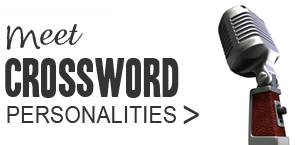 In a simple container clue, you are given two components: the container and the content, and the indicator tells you to put the container around the content. For example, the word EARTHEN can be clued as EARN around THE.
In a simple container clue, you are given two components: the container and the content, and the indicator tells you to put the container around the content. For example, the word EARTHEN can be clued as EARN around THE.
Things get more complex when the wordplay splits the answer into more than two components. If EARTHEN is treated as "EAR and TEN around H", then it can be clued in any of these ways:
Case 1: EAR + (TEN around H)
Case 2: (EAR+TEN) around H
A majority of 3-segment container clues are written in the more intuitive style of Case 1. Case 2 is harder to reconcile with for most solvers, and that's the one this post is about.
In generic terms, a word can be clued in the form {A in (B+C)} where A goes anywhere inside (B+C): within B, within C, or within the gap between B and C.
Indicator Grammar: Singular or Plural?
If a verbal indicator, say "surround", is used in the clue for {(B+C) around A}, then should it be written as {(B+C) surrounds A} or {(B+C) surround A}?
The answer depends on whether (B+C) is treated as one item or two. Both styles are seen in published clues, as in these two examples from the Times:
Singular Indicator
Times 25321: A high street store, defaulting on rent, holds firm no matter what (2,3,5) AT ALL COSTS
(A + TALL + ST + S[tore]) holds CO
Plural Indicator
Times 24448:
Man books house round the corner - probably not for this! (3,5) HEN NIGHT
(HE +
NT) house NIGH
Another interesting example of the use of a plural indicator:
THC 10294 (Arden): They could be cast because people have one (10) ASPERSIONS
At first glance you might read the wordplay as "AS + (PERSONS around I)" and think that the cryptic grammar is off. The indicator needs to be in the singular form – "has" instead of "have" - to justify this parsing. But the setter intends you to read the wordplay as "(AS+PERSONS) around I": AS and PERSONS together have I inside them.
When the wordplay extends beyond two components, the setter has the flexibility to place invisible "brackets" in the cryptic logic. The solver needs to work out where those brackets are and apply the first rule of BODMAS: process whatever is inside the brackets first. In the ASPERSIONS clue, the position of the brackets makes all the difference to the cryptic grammar.
As With Containers, So With Deletions
3-segment wordplay works with deletion clues as well: {(B+C) – A} could mean that A is deleted from within B or within C.
Times 23516: Watered animal died – that’s not right (5) HOSED
(HORSE + D) minus R
FT 14152 (Dogberry): Basic source of mould removed from the Spanish cheese (9) ELEMENTAL
M deleted from (EL + EMMENTAL)
Is {A in (B+C)} wordplay Ximenean?
As far as I know, Ximenes had no explicit rule about this type for wordplay. Ximenean setters/publications like Azed and the Times use it in their crosswords. It looks fine to me but some solvers don't like it – if you have the patience, you might want to go through a lengthy debate from 2010 about Anax's clue in this CWC thread. The clue was:
A juke box versus a more modern version? (7) ADVANCE
A + DANCE (juke) box i.e. contain V (versus)
What do you say to {A in (B+C)}? Fair or not?
Solve These
Pit your wits against these clues with {A in (B+C)} wordplay.
Times 25078: Boorish Conservative impulse solely to conceal bad name (12) _U_________Y
Times 25311: I have got in a state, giving up being very active (5,3,7) _____ ___ K______
Times 25305: Toiling hard in Brazilian location, American breathes in powdery stuff (11) __D______O__
Related Posts:
If you wish to keep track of further articles on Crossword Unclued, you can subscribe to it in a reader via RSS Feed. You can also subscribe by email and have articles delivered to your inbox, or follow me on twitter to get notified of new links.


 In a simple
In a simple  If you use an iPad, iPhone or iPod Touch, try out this app called Puzzazz, a collection of puzzle e-books that allow you to solve puzzles directly on the pages of the e-books.
If you use an iPad, iPhone or iPod Touch, try out this app called Puzzazz, a collection of puzzle e-books that allow you to solve puzzles directly on the pages of the e-books. 
 The inclusion of long solutions in cryptic crosswords, often titles, sayings, phrases, quotes etc. (let us say of 15 or more characters in length) can be quite compelling for puzzle setters. The main reason is that the use of lengthy composites can help to add interest and diversity to a puzzle, making solving more fun. Indeed, in compiling a themed crossword the use of longer entries may sometimes prove to be essential. Another positive is that long composites facilitate connectivity within the whole of a grid making it less likely that a solver will get stuck in one particular sector of a puzzle. There are downsides to be cautious of, though. If the clue is too easy much may be given away too early in terms of copious checking letters for other solutions in far-flung parts of a puzzle. Another danger is that if the solution is composed of a number of shortish words the pattern of enumeration alone can provide the key to solving, and a setter's elaborately worked out wordplay completely by-passed.
The inclusion of long solutions in cryptic crosswords, often titles, sayings, phrases, quotes etc. (let us say of 15 or more characters in length) can be quite compelling for puzzle setters. The main reason is that the use of lengthy composites can help to add interest and diversity to a puzzle, making solving more fun. Indeed, in compiling a themed crossword the use of longer entries may sometimes prove to be essential. Another positive is that long composites facilitate connectivity within the whole of a grid making it less likely that a solver will get stuck in one particular sector of a puzzle. There are downsides to be cautious of, though. If the clue is too easy much may be given away too early in terms of copious checking letters for other solutions in far-flung parts of a puzzle. Another danger is that if the solution is composed of a number of shortish words the pattern of enumeration alone can provide the key to solving, and a setter's elaborately worked out wordplay completely by-passed.






 Follow on Twitter
Follow on Twitter Join us on Facebook
Join us on Facebook Get RSS
Get RSS
